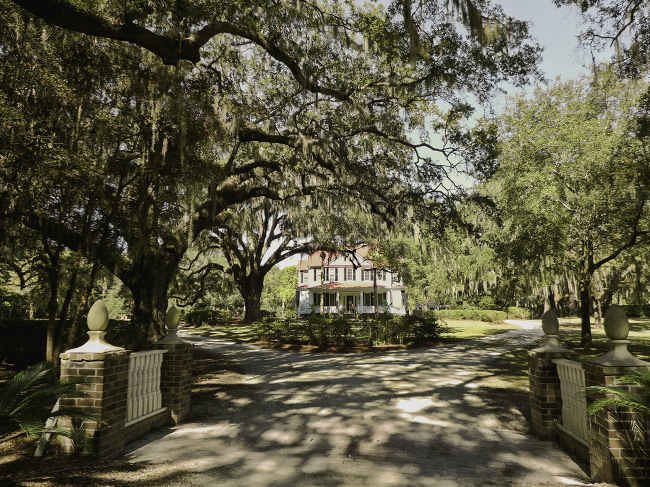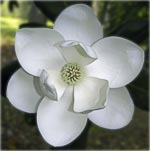Crawford Plantation – Edisto Island – Charleston County
Basic Information
- Location – Fishing Creek, Edisto Island, St. John's Colleton Parish, Charleston County
8202 Oyster Factory Road off SC 174 (1, p. 1)
- Origin of name – Named after James Crawford, an early owner (2, VII: 6)
- Other names – Crawford's
- Current status – Privately owned (1, p. 1)
Timeline
- ? – Earliest known date of existence
James and Elizabeth Beckett acquired the property (1, p. 7).
- 1784 – James Crawford obtained 110 acres from the Becketts (1, p. 7).
- 1802 – James Crawford sold the property to Thomas Baynard (1, p. 7).
- ? – Ephraim Mikell purchased the parcel from Thomas Baynard (1, p. 7).
- 1809 – Ephraim Mikell died and willed the plantation to his son, also named Ephraim Mikell. The plantation was referred to as Crawford's in Mikell's will (1, p. 7).
- 1830s – House built (1, p. 7)
The house was probably constructed for William Archibald and Hess Marion Waring Smith Mikell. Perhaps even before William's father, Ephraim, had legally willed the plantation to his son. The house is frame construction in the T-shaped plan (1, pp. 5, 7).
- 1838 – Ephraim Mikell II left Crawford Plantation, and an adjoining parcel known as Davants, to his son William Archibald Mikell (1, p. 7).
- 1840 – William Archibald Mikell died and his wife Hess inherited her husband's estate (1, p. 7).
- 1847 – William James Whaley purchased the combined 490 acres of Crawford Plantation and Davants from Hess for "fifty-five dollars and an acre of high land" (1, p. 7).
- 1861 – The Whaley family evacuated Edisto Island. Family tradition holds that after the Civil War, the Crawford Plantation house was occupied by two Freedmen's Bureau teachers (1, p. 8).
- Circa 1866 – William James Whaley returned to the plantation and began to cultivate cotton using wage labor (1, p. 8).
- 1888 – William James Whaley passed away and son William James Whaley Jr. inherited Crawford Plantation (1, p. 8).
- 1922 – After the death of William James Whaley Jr., his widow and three sons moved to Charleston and the house at Crawford Plantation was left vacant (1, p. 8).
- 1945 – The Whaley family sold the plantation to I.C. Tavell (1, p. 8).
- 1993 – James A. and Susan B. Rice of New York were owners of record (1, p. 4).
Land
- Number of acres – 110 in 1784; 4 in 1993 (1, pp. 4, 7)
- Primary crop – Sea island cotton
Slaves
- Number of slaves – 55 in 1840 (1, p. 7)
We are actively seeking information on the slaves who lived and worked at this plantation. If you find a resource that might help, please fill out this form. Thank you.
References & Resources
- National Register of Historic Places
– Nomination Form - submitted in 1992 by Sarah Fick - requires Adobe Reader
– Photographs, architectural overview
- Claude Henry Neuffer, editor, Names in South Carolina, Volume I through 30 (Columbia, SC: The State Printing Company)
 Order Names in South Carolina, Volumes I-XII, 1954-1965
Order Names in South Carolina, Volumes I-XII, 1954-1965
 Order Names in South Carolina, Index XIII-XVIII
Order Names in South Carolina, Index XIII-XVIII
- Richard Porcher and Sarah Fick, The Story of Sea Island Cotton
(Layton, Utah: Gibbs Smith, 2005)



